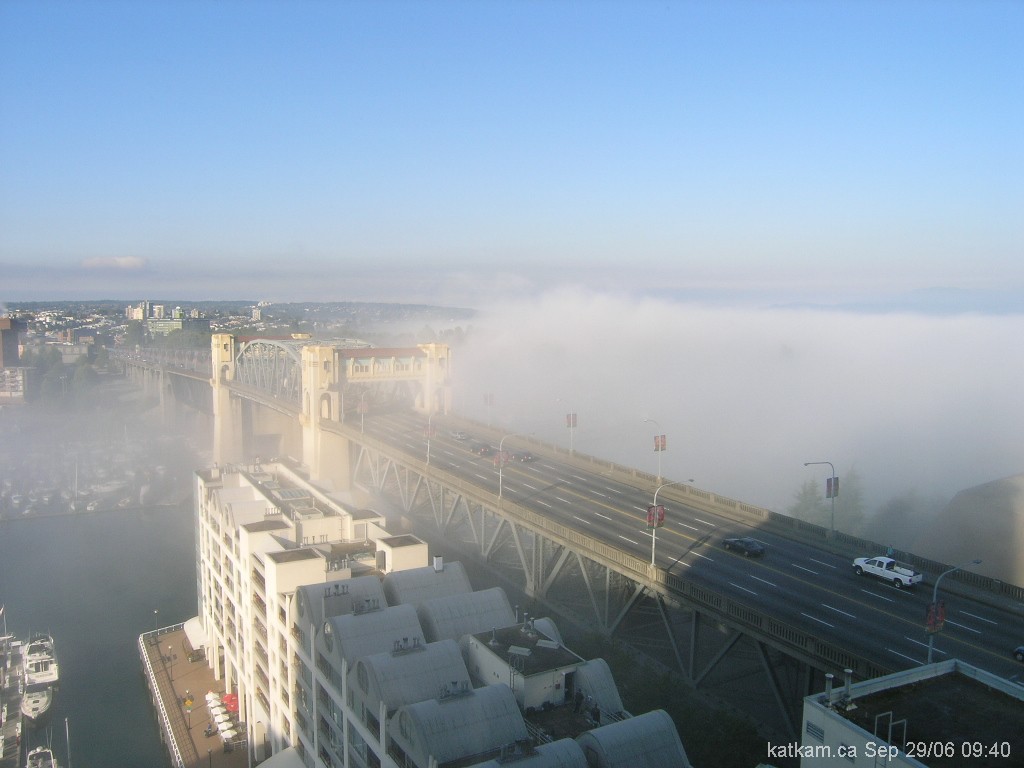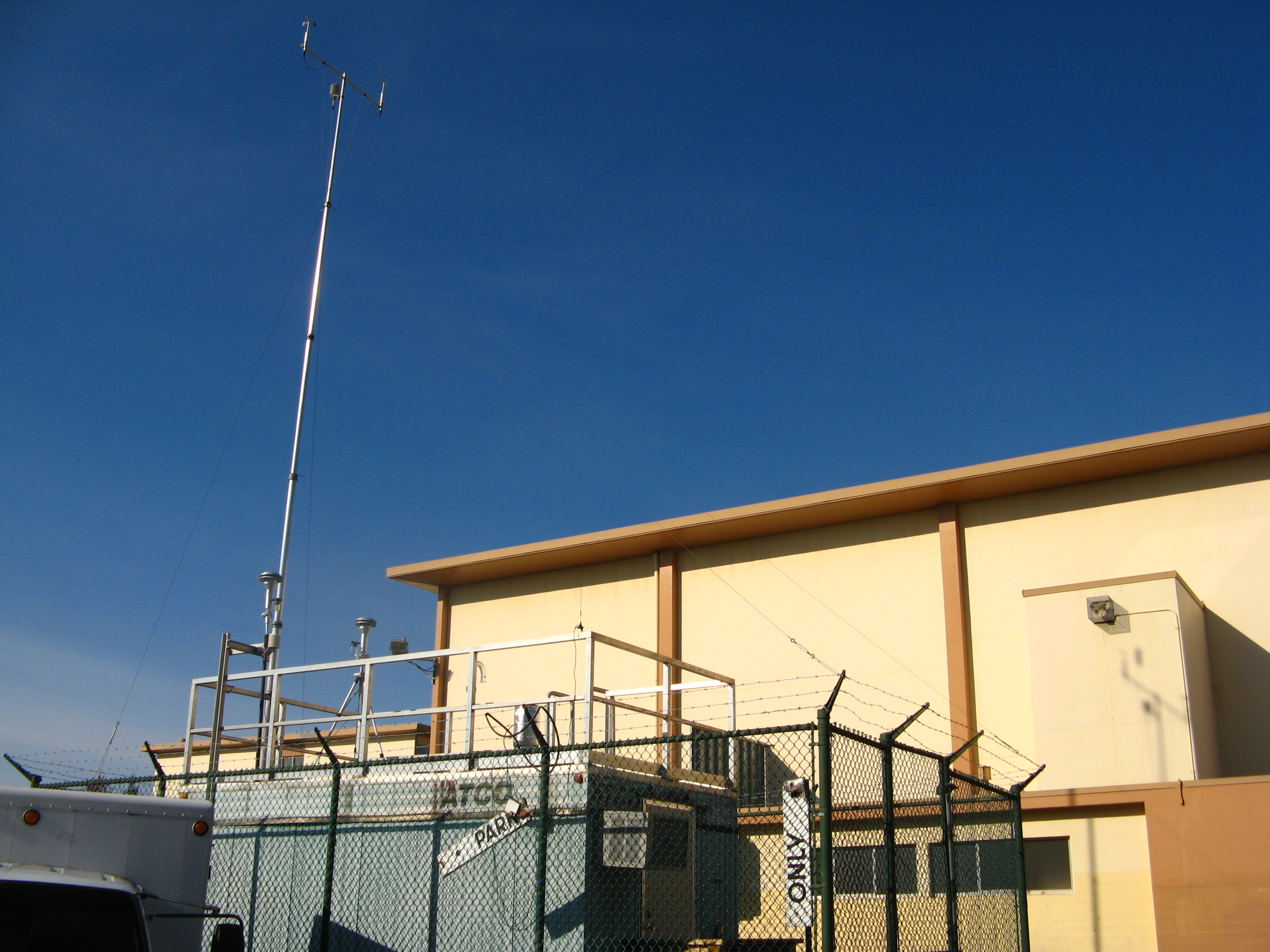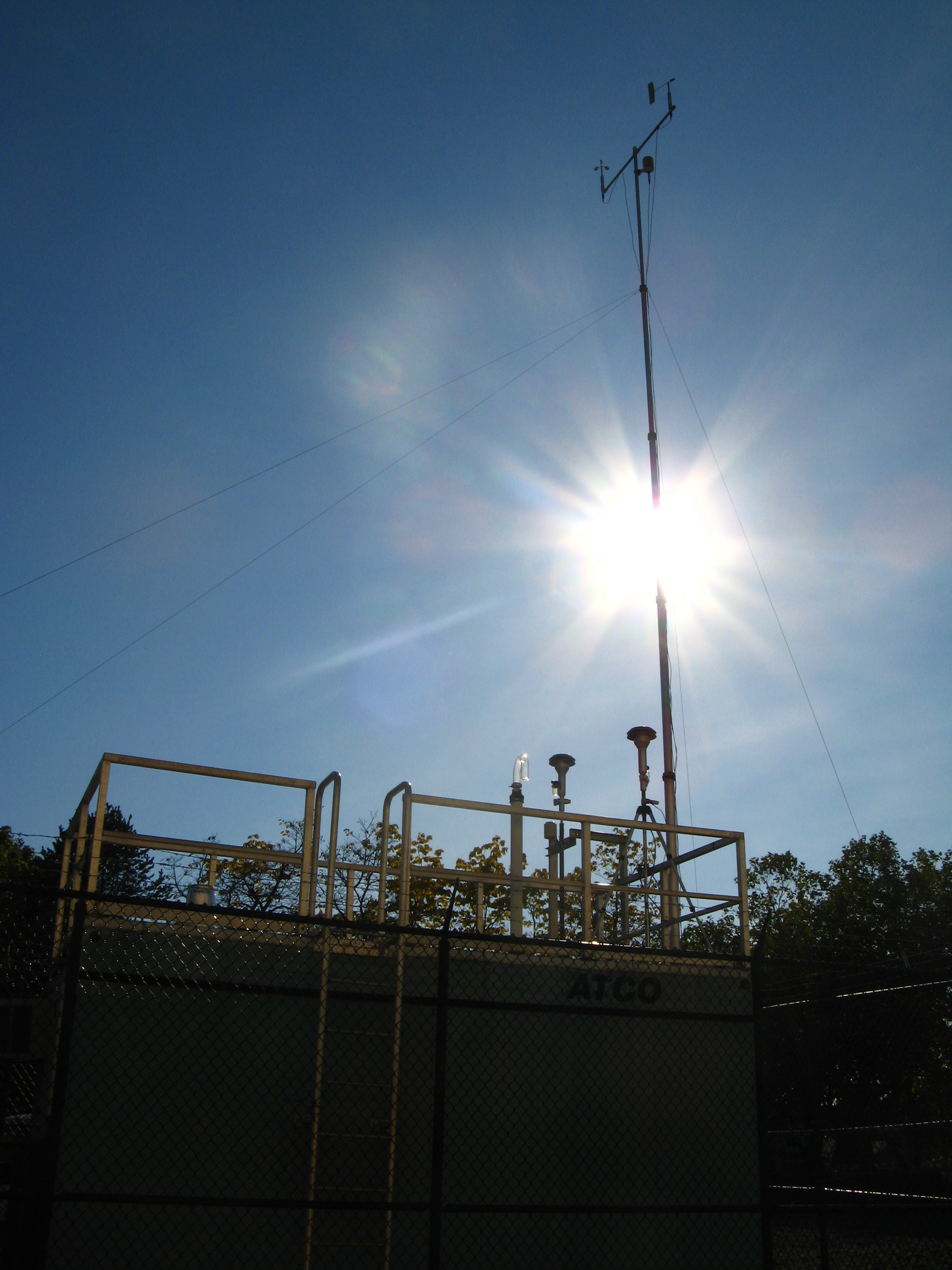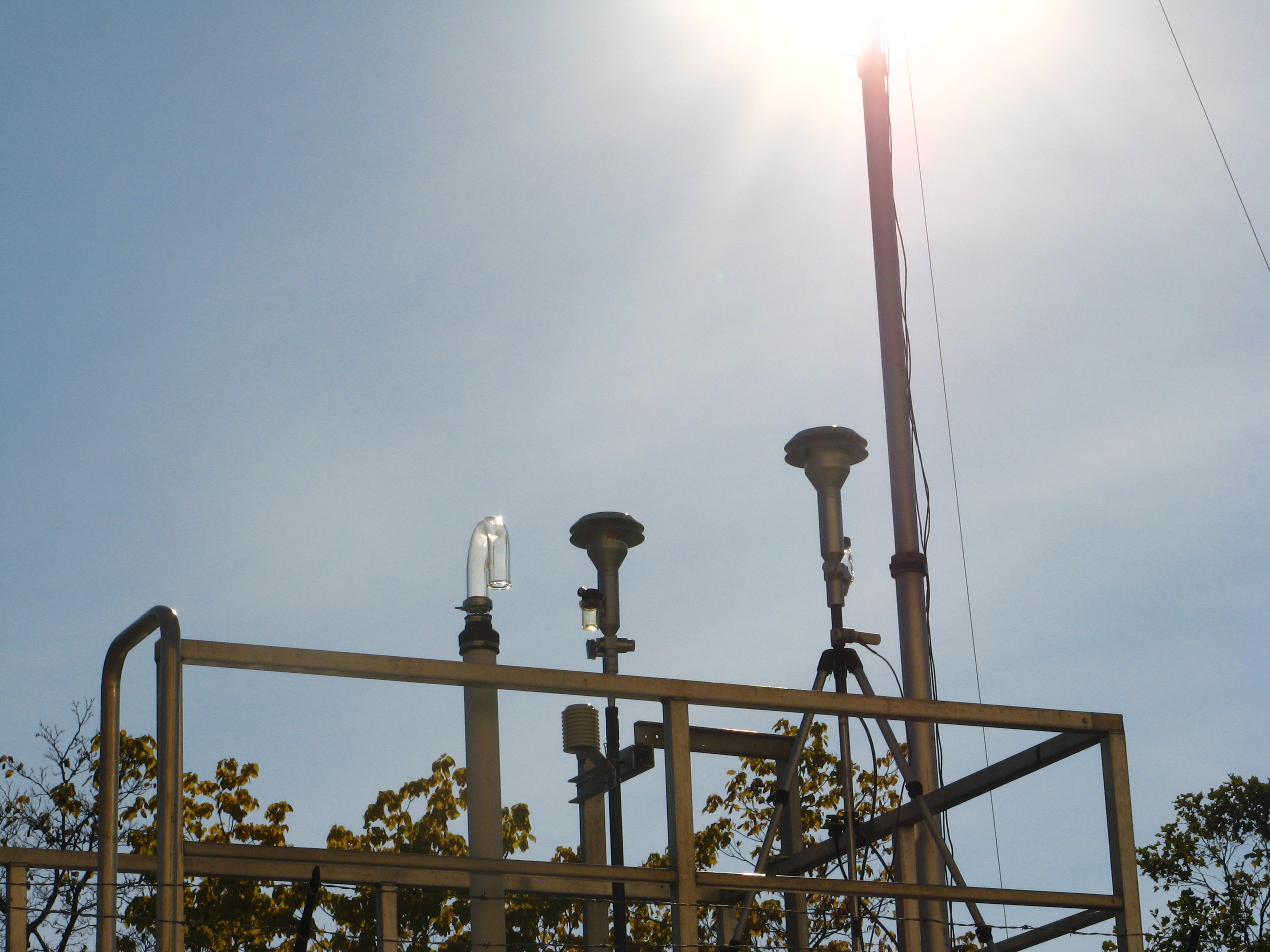|
|||||||||||||
 |
|||||||||||||
|
Climatology Map This map contains many interesting sites around Vancouver you can visit to get a bit more knowledge about climatology. Click here for full screen map.
Information
Photos
Additional Resources
KatKam
Location of the real-time webcam photos (available every 5 minutes) taken from the TSI office in downtown Vancouver, facing WSW. This is a great site for seeing weather systems approaching Vancouver (from the west) and other everyday weather phenomena, or verifying field results! See the photo tab for some examples. English Bay, the mouth of False Creek, the Burrard Street Bridge, West Vancouver and the UBC endowment lands are all visible..
Click photo for high resolution image
Information
Photos
Additional Resources
UBC Climatology Station
Established in 1957, the UBC climatology station at Totem Field measures most atmospheric variables, including: temperature, humidity, wind, precipitation, snow, and radiation. Historically, readings were manually taken every morning until the installation of an electronic data logger in 1990. The instrumentation of the UBC climatology station conforms to the Environment Canada standards. Instruments included are: Stevenson screen, 10 m level wind vane, various rainfall gauges, a snow depth acoustic sounder, a multitude of radiation instruments, and soil temperature sensors. Not available Not Available
Information
Photos
Additional Resources
CORALNet-UBC Lidar
Have you ever wondered what the green glow in the night sky emanating from UBC campus is all about? The UBC Lidar (light detection and ranging) is housed on Totem Field, and emits a green laser beam directly upwards, that may produce a green 'glow' when passing through low clouds at night. This lidar was the first of several mobile lidar stations across Canada as part of CORALNet (Canadian Operational Research Aerosol Lidar Network) in order to study long-range transport of aerosols in the lower atmosphere and air quality issues. It has been running continuously since April 2008, all first-look imagery is available online. Not Available
Links
CORAL Net-UBC
Papers
van der Kamp, D., McKendry, I.G., Wong, M., Stull, R. (2008). LiDAR Ceilometer Observations and Modeling of a Fireworks Plume in
Vancouver, British Columbia. Atmospheric Environment, 42, 7174-7178
Information
Photos
Additional Resources
UBC EOS Weather Forecast Research Team
The UBC Earth and Ocean Science Weather Forecast Research Team produces real-time Ensemble Weather Forecasts for Western Canada at various model scales. Included is a 2-day forecast for UBC campus! Not available
Information
Photos
Additional Resources
Vancouver Kitsilano Air Quality Station
One of many Air Quality monitoring stations across the Lower Fraser Valley. The equipment is housed in a large trailer at then back of Kitsilano Secondary School. This is easily accessible if you've ever wondered what an AQ monitoring station looks like, though no access is allowed inside the trailer to the public. Current measurements: carbon monoxide, nitrogen dioxide, ozone, sulphur dioxide, nitrogen oxide, and PM2.5. See additional resources tab for a link to daily measurements.
Information
Photos
Additional Resources
Vancouver-Sunset
The 28 m tall Vancouver-Sunset Urban Climate Research Tower was established in 1978 and has provided semi-continuous data for meteorological, climatological, hydrological, and biogeochemical research. Of particular interest is the effect of land modification (i.e. converting open spaces into urban spaces) on the land-atmosphere exchange. Some areas of research include, but are not limited to: radiation budgets, energy and water balances, vertical distribution of temperature and wind velocity, and much much more! Over 45 papers have been published based on the data collected from the research tower. It is also part of the IAUC Urban Flux Network, MUDH, and the CFCAS network EPiCC (2006-2010). Data is currently available online. None available
Links
http://www.geog.ubc.ca/~achristn/infrastructure/sunset.html
http://www.geog.ubc.ca/~epicc/webdata/sunset.html http://www.geog.ubc.ca/urbanflux/ http://www.epicc.uwo.ca/ Research Papers Grimmond, C. S. B., Oke, T. R. (1999). Aerodynamic roughness of urban areas derived from analysis of surface form. Journal of Applied Meteorology, 38, 1262-1292. Grimmond, C. S. B., Oke, T. R. (1999). Rates of evaporation in urban areas. Impacts of Urban Growth on Surface and Ground Waters. International Association of Hydrological Sciences, Publication No. 259, 235-243. Grimmond, C. S. B., Oke, T. R. (2002). Turbulent heat fluxes in urban areas: observations and a Local-scale Urban Meteorological Parameterization Scheme (LUMPS). Journal of Applied Meteorology, 41, 792-810. Masson, V., Grimmond, C. S. B., Oke, T. R. (2002). Evaluation of the Town Energy Balance (TEB) scheme with direct measurements from dry districts in two cities. Journal of Applied Meteorology, 41, 1011-1026. Voogt, J.A., Oke, T. R. (2003). Thermal remote sensing of urban climates. Remote Sensing of Environment, 86, 370-384.
Information
Photos
Additional Resources
Vancouver - Oakridge
The 29 m tall Vancouver-Oakridge Urban Flux Tower and Water Monitoring Area infrastructure was established in summer 2008 and 2009. The area is highly vegetated and residential. The data collected from this site aided in research on exchange of energy and water between the city surface and atmosphere using an Eddy Covariance System in addition to surface and household observations. The aim of the research was to aid in weather forecasting in cities and water conservation efforts. It is also part of the IAUC Urban Flux Network, and the CFCAS network EPiCC (2006-2010). Data is currently available online Not Available
Information
Photos
Additional Resources
Camosun Bog
Just off the UBC campus, in Pacific Spirit Park, lies a hidden ecological wonder. Camosun Bog has existed for nearly two thousand years, and was largely untouched and undiscovered for most of this time. This changed when the city of Vancouver began to expand. The area has undergone several different threats, including the dumping of waste, the drainage of sewage water into the area, and lowering of the water table. Camosun Bog developed over an area with high water content, low oxygen and low nutrients. Due to its composition, it is home to vegetation unique to this latitude, often seen much further North. Sphagnum moss grows in abundance here, as well as other bog species such as Sundew, Labrador tea, Bog Cranberry, and other species. Although there are no longer issues of threats to the bog, these past events have had disastrous and long-lasting effects on the area. A group of dedicated individuals, called the Camosun Bog Restoration Society, or the "crazy boggers" devotes every Saturday to the restoration of the bog and the preservation of the species growing there. Their website, http://camosunbog.org/, has detailed description of the work being done to restore the bog, as well as information about the ecology and the bog itself. |
|||||||||||||
|
Department of Geography - Faculty of Arts - The University of British Columbia |
|||||||||||||




